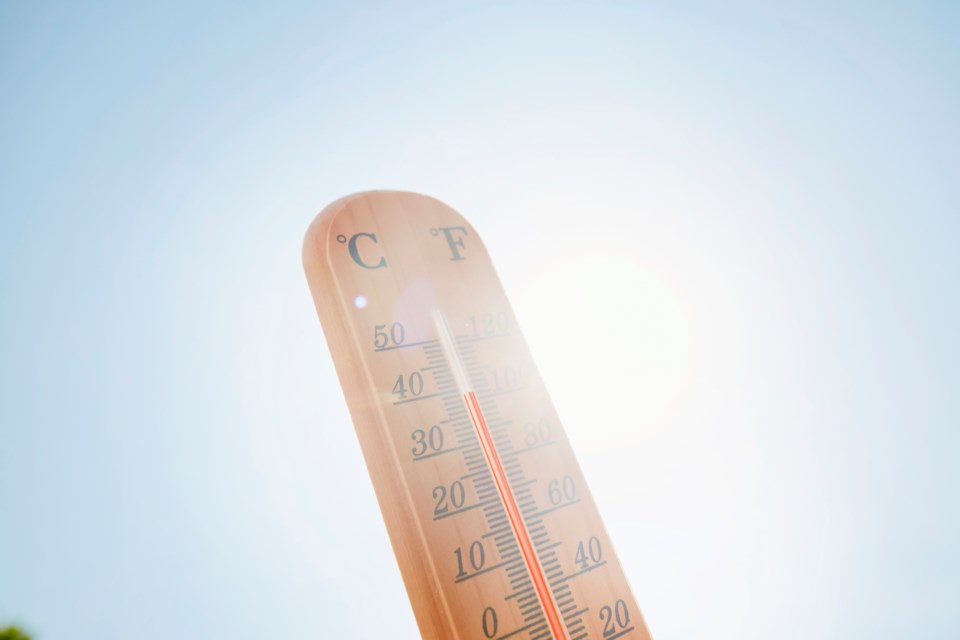Environment Canada’s seasonal forecast for April through June predicts that the southern coast of B.C. has an over 70 per cent chance of experiencing higher than normal daily temperatures.
That forecast and “heat dome” events affecting our area in recent years, made a draft extreme heat plan presented at the Sunshine Coast Regional District’s (SCRD) March 14 committee meeting a hot discussion topic for area directors.
The plan's goals, according to a spokesperson for contractor Strategic Alliance for Emergency Resilience Sandy Miller, are to alert Coasters to risks posed by extreme heat incidents, increase public awareness on how to prepare for and stay safe during such events and to improve how local government responds. The document was developed with input gathered through discussions with SCRD staff and in 112 engagement sessions with community partners, Miller shared.
Characterizing heat events as “a new type of emergency for our area,” SCRD emergency program staffer Nancy Hughes addressed the next steps contemplated in the plan’s rollout, notably advancing public communications. Inserting “public facing” information on the regional district’s website to encourage residents to make personal preparations to be ready for “heat dome” type events is one of the first efforts to be made.
“The public should be aware of key preparedness information, including: where to go for official up-to-date information, what to expect during an extreme heat event (EHE) and what they need to know to prepare for and protect themselves from an EHE,” the plan states.
What is an extreme heat event?
The lower Sunshine Coast is part of the province’s Southwest geographic heat region of the B.C. heat alert system (HARS), which “was developed and implemented in 2022 following the BC Coroner inquest into the 619 heat-related deaths," the document details. Those deaths occurred in late June 2021, when consecutive days of record-setting heat hit the province.
The BC HARS uses a two-level alert system to warn the public of an EHE. A Level 1 heat warning is to be issued when two or more days are forecasted to reach daytime maximum temperatures of 29 C or hotter and overnight minimum temperatures of 16 C or over. The report cites such conditions create a “moderate risk to public health."
A Level 2 extreme heat emergency, a condition that poses “a very high risk to public health,” is to be issued when Level 1 conditions are experienced and the weather forecast “indicates that daily highs will substantially increase day over day for two days or more."
The plan indicated that our region should anticipate up to three Level 1 events annually and at least one Level 2 event every decade. “Given the ongoing effects of climate change, the growing likelihood of EHE, and their potential to pose significant risks to public health, cannot be underestimated. It is important that communities begin proactive planning and preparations to safeguard public health and safety in the face of these evolving challenges,” it states.
Why EHE planning falls to the SCRD
Highlighted in the document is a “common misconception” surrounding EHEs: that they fall solely under the purview of regional health authorities and are primarily a public health emergency. “It is important to understand that an EHE is a climate-caused emergency affecting the entire community, requiring the collaboration of numerous community partners” and local government leadership.
As a guiding framework for community preparedness and response activities, the plan includes a “playbook” for local government partners, such as community associations, churches and service agencies.
Also within it is a “quick start guide” for emergency operations centres (EOC) specialized to provide community support during events where prolonged periods of elevated temperatures impact the lives of area residents.
All plan components are “living documents” according to Hughes and will be updated as new data is collected and when learnings from actual local events come to light.
Financial Impacts
Likening extreme heat planning to the FireSmart program, Area A Director Leonard Lee called such efforts “very expensive” for regional governments to take on in addition to the core services they were established to provide, such as water, public transportation and solid waste. “Will we be getting grants or will we be expecting taxpayers to foot the bill?” Lee asked.
Planning manager Ian Hall responded that the work to date on the plan was paid for through a grant and that staff continue to look for grants to support core emergency program needs. When asked about how the SCRD is preparing the buildings it owns for severe heat events, he said “conversations about facility resilience will be front and centre” as the plan is implemented.
The SCRD’s EHE preparation is being paid for with a $120,000 grant from the Union of BC Municipalities Community Emergency Preparedness Fund. According to a budget status update report contained on the agenda for a March 28 committee meeting, as of March 20, $49,375 had been spent.



